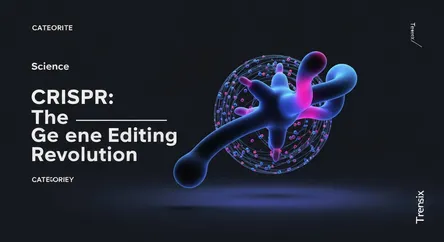Science
CRISPR: The Gene Editing Revolution

Discover CRISPR-Cas9, the revolutionary gene-editing tool that allows scientists to alter DNA sequences and modify gene function. Learn how it works.
What is it?
CRISPR, short for Clustered Regularly Interspaced Short Palindromic Repeats, is a revolutionary gene-editing technology. Originally a natural defense mechanism in bacteria, it allows scientists to make precise changes to the DNA of cells. The system uses a guide RNA molecule to target a specific DNA sequence and an enzyme, most commonly Cas9, to cut the DNA at that location. This molecular "cut-and-paste" mechanism enables researchers to remove, add, or alter sections of the DNA sequence, effectively rewriting the genetic code with unprecedented accuracy and ease.
Why is it trending?
CRISPR is constantly in the news because of its immense potential and rapid advancements. Its relative simplicity and affordability have democratized genetic research, leading to a surge in discoveries. It's trending for its successful application in clinical trials to treat genetic diseases like sickle cell anemia and beta-thalassemia. Furthermore, its use in agriculture to develop more resilient and nutritious crops keeps it at the forefront of scientific innovation, highlighting its power to solve some of humanity's biggest challenges.
How does it affect people?
The impact of CRISPR is profound. In medicine, it holds the promise of curing inherited diseases, treating certain cancers, and combating viral infections. For consumers, it could lead to better food sources and new biofuels. However, the technology also sparks significant ethical debates. The ability to edit the human germline—making heritable changes—raises concerns about "designer babies" and unforeseen long-term consequences. This dual nature of immense promise and ethical complexity ensures CRISPR remains a critical topic of public and scientific discussion.